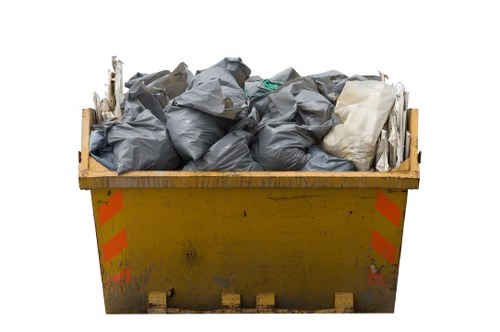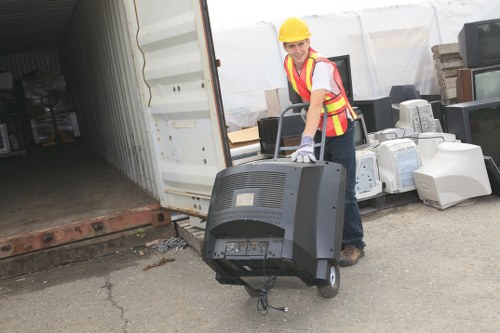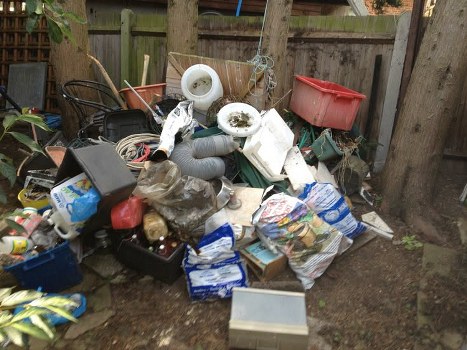Construction Waste Disposal in Hainault
Understanding Construction Waste

Construction waste is an inevitable byproduct of any building or renovation project. It encompasses a wide range of materials, including concrete, wood, metals, plastics, and more. Proper management of this waste is crucial to maintain environmental standards and ensure the sustainability of construction practices in Hainault.
In Hainault, the growing construction industry has led to an increase in the volume of waste generated. Efficient disposal methods are essential to handle this surge, minimize environmental impact, and comply with local regulations.
Understanding the different types of construction waste is the first step towards effective waste management. This knowledge allows businesses and contractors to implement appropriate disposal strategies, ensuring that waste is handled responsibly.
Importance of Proper Waste Disposal

Proper construction waste disposal is vital for several reasons. Firstly, it helps in reducing the environmental footprint of construction activities. By managing waste efficiently, we can minimize pollution, conserve natural resources, and promote recycling and reuse of materials.
Secondly, adhering to waste disposal regulations in Hainault is a legal requirement. Non-compliance can result in hefty fines and legal complications, which can tarnish a company's reputation and financial standing.
Furthermore, effective waste management can lead to cost savings. By reducing the amount of waste sent to landfills, companies can lower disposal costs and potentially generate revenue through the sale of recyclable materials.
Methods of Construction Waste Disposal in Hainault

There are several methods for disposing of construction waste in Hainault. These include recycling, reuse, and responsible landfill disposal. Each method has its own advantages and is suitable for different types of waste.
Recycling involves processing waste materials to create new products. This is an environmentally friendly approach that reduces the need for raw materials and conserves resources. Metals, wood, and certain plastics are commonly recycled in Hainault.
Reuse entails finding new applications for used materials without significant processing. For instance, bricks from demolished buildings can be cleaned and used in new construction projects, reducing the need for new materials.

Choosing the Right Waste Disposal Service

Selecting a reliable construction waste disposal service in Hainault is crucial for effective waste management. It's important to consider factors such as the company's reputation, range of services offered, and compliance with local regulations.
Look for services that provide comprehensive solutions, including waste collection, transportation, and processing. A company that offers recycling and reuse options can help you achieve your sustainability goals.
Additionally, evaluate the cost-effectiveness of the service. While it's essential to stay within budget, compromising on quality can lead to long-term issues. Choose a service that offers a balance between affordability and high-quality waste management.
Benefits of Professional Waste Disposal Services
Hiring professional construction waste disposal services in Hainault offers numerous benefits. These services ensure that waste is handled efficiently and in compliance with all relevant regulations.
Professional services have the expertise and equipment to manage large volumes of waste, reducing the burden on your team. This allows you to focus on your core construction activities without worrying about waste management.
Moreover, professional disposal services contribute to sustainability by promoting recycling and reducing landfill usage. This not only benefits the environment but also enhances your company's reputation as a responsible and eco-friendly business.
Tips for Effective Waste Management
Implementing effective waste management practices can significantly improve your construction project's sustainability. Here are some tips to help you manage construction waste effectively in Hainault:
- Reduce: Minimize waste generation by planning projects carefully and using materials efficiently.
- Reuse: Find ways to reuse materials whenever possible to lower the demand for new resources.
- Recycle: Separate recyclable materials and ensure they are processed appropriately.
Proper segregation of waste at the source is also essential. This makes recycling and disposal more efficient and reduces the overall environmental impact.
Additionally, regularly monitor and evaluate your waste management practices to identify areas for improvement and ensure continuous compliance with regulations.
Common Challenges and Solutions
Managing construction waste comes with its own set of challenges. One common issue is handling hazardous materials. Proper disposal of these materials requires specialized knowledge and facilities to prevent environmental contamination.
Another challenge is managing large volumes of waste generated during large-scale projects. Efficient waste disposal services and proper planning are essential to address this issue effectively.
Solutions include partnering with experienced waste management companies, investing in training for your team, and implementing comprehensive waste management plans that address potential challenges.
Future Trends in Construction Waste Disposal
The field of construction waste disposal is evolving, with new trends emerging to promote sustainability and efficiency. One significant trend is the adoption of sustainable practices, such as using eco-friendly materials and implementing circular economy principles.
Technological advancements are also playing a crucial role. Innovations like waste tracking software, automated sorting systems, and advanced recycling technologies are enhancing the effectiveness of waste management in Hainault.
Staying informed about these trends and integrating them into your waste management strategies can help you stay ahead in the industry and promote long-term sustainability.
Conclusion
Effective construction waste disposal in Hainault is essential for environmental sustainability, legal compliance, and cost efficiency. By understanding the types of waste, implementing proper disposal methods, and partnering with reliable waste management services, you can ensure that your construction projects are both successful and responsible.
Don't let construction waste overwhelm your projects. Contact us today to learn more about our professional waste disposal services and how we can help you manage your construction waste efficiently.
Book your service now and take the first step towards sustainable construction practices.